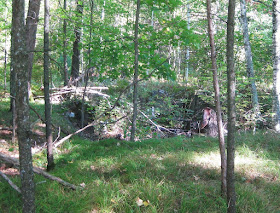Over on the sidebar is a link to “Contrary Brin”, a site I sometimes visit and post on under my same nom de
cursor, Tacitus. Dr. Brin is a successful science fiction writer, and while I mostly argue with him about his politics
(which I consider flaky even by California
standards), there are times when more substantive discussions ensue.
Dr. Brin has written extensively on the topic of “Uplift”,
the process by which non-human species can be genetically nudged into
sapience. His stories often feature
intelligent dolphins and chimpanzees, although the latter still seem to be
partly comic relief.
In any event the concept of Uplift is interesting, and a
recent discussion developed along the lines of how much we are both ready for and
capable of doing in the near future.
Here are a few of my suggestions….
Companion Animals
This will be first, because so much of it is already
happening. We have simple looking tasks
like Seeing Eye dogs, and more complex ones such as dogs trained to recognize
seizures. We just need to diversify a
little, add some technology and find a way to make the dogs a little smarter.
My father is a case in point. At age 90 he has enough dementia that he
needs constant oversight. He has a
little dog named Mugsy that provides unwavering companionship, a great thing in
its own right. Now, we just need to
smarten the dog up a bit. More than a
bit in the case of Mugsy, but you get my drift.
Dad is not left alone, but he could be for short stretches
if Mugsy were able to respond to falls, verbal cues, or just a lack of movement
for a certain stretch of time. He could
then go over to a floor level button and stomp it with his ridiculous little
paw. This could turn on a monitoring
system (assumes Dad wears a bracelet with the sensors). Position in the house, length of time since
movement, vital signs could all be read.
A loud buzzer could sound asking for an “ok” signal. This could work.
And for dogs smarter than Mugsy, perhaps guide dogs with
GPS?
The Service Industry
Look, it’s almost a cashless economy already. We just swipe cards and wave devices to pay
for things. So why not replace fast food
counter help with cute capuchin monkeys?
They can figure out your order with about the accuracy of
sullen teenagers and can push the relevant buttons. There is that whole feces throwing thing to get past so we would have to Uplift them to the point of
perfect continence…I foresee uniforms with Velcro and the addition of small
purpose built primate potties.
Speaking of uniforms, they would also look better in silly
little hats.
Go ahead and laugh, but I for one would actually increase my
visits to “MonkDonalds” if the ordering process was entertainment instead of
drudgery.
The concept could easily be expanded to German Sheppard
bartenders. They would have a paw pad
reader to provide extra security. We
would not want bar patrons yelling “Squirrel” and reaching over to get a drink
on the house. Any who tried should be
bitten. No need to hire a separate bouncer.
Security
There have already been some interesting uses of animals in
this field. The US Military used to have
geese guarding bases. They were noisy
and observant. But this is just using their
territorial instincts and stupidity. We
can do better.
Consider the possibility of rats for night time
security. Outfit them each with a shock
collar that keeps them from straying off site.
The collars would also have little “rat-cams”, thermal sensors and GPS
units. The rats would do what rats
do…wander around all night. Just as in
past times with human watchmen there would be stations to check. At random times each station would dispense
rat chow. It would take a good sized
computer to monitor all this, but at least thermal signatures could be watched
automatically. The visual images would
be back up. A full scale attack of the
entire “Rat Patrol” would be a last ditch defense!
Writing anything speculative about the near future is always perilous. And as I was writing this I purposely did not search the internet to see how many of my ideas had already been attempted. Pretty much all of them!
Looking for a
GPS unit for your Seeing Eye dog? Got it covered.
Monkeys as waiters? OK it is a
Japanese tavern instead of McDonalds, but the concept has been proven.
Hey, how about
The Monkey Police!
And a rat based security force? Well, they have so far been trained only to
detect land mines, but the technology is fairly close to my whimsical notions.
I begin to see why most science fiction writers prefer to put their stories a little farther off in the future.
















































